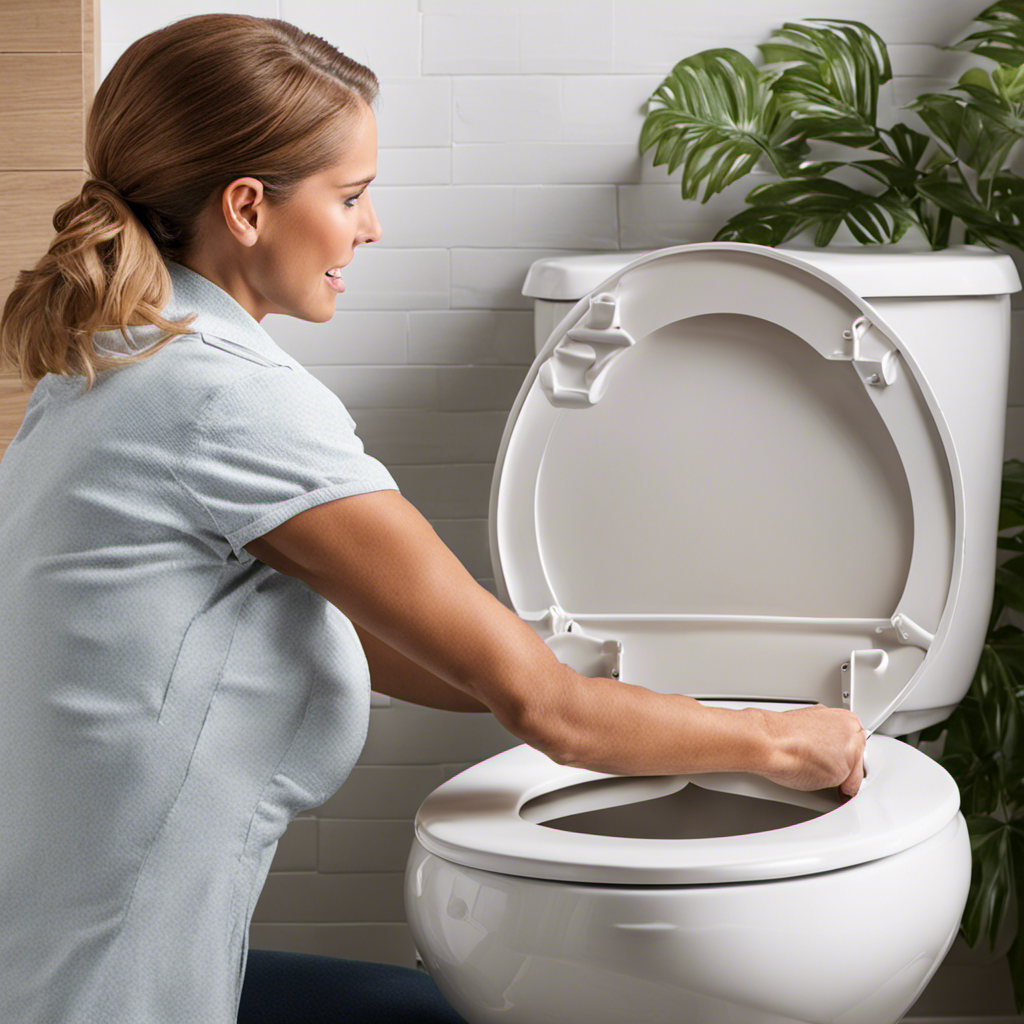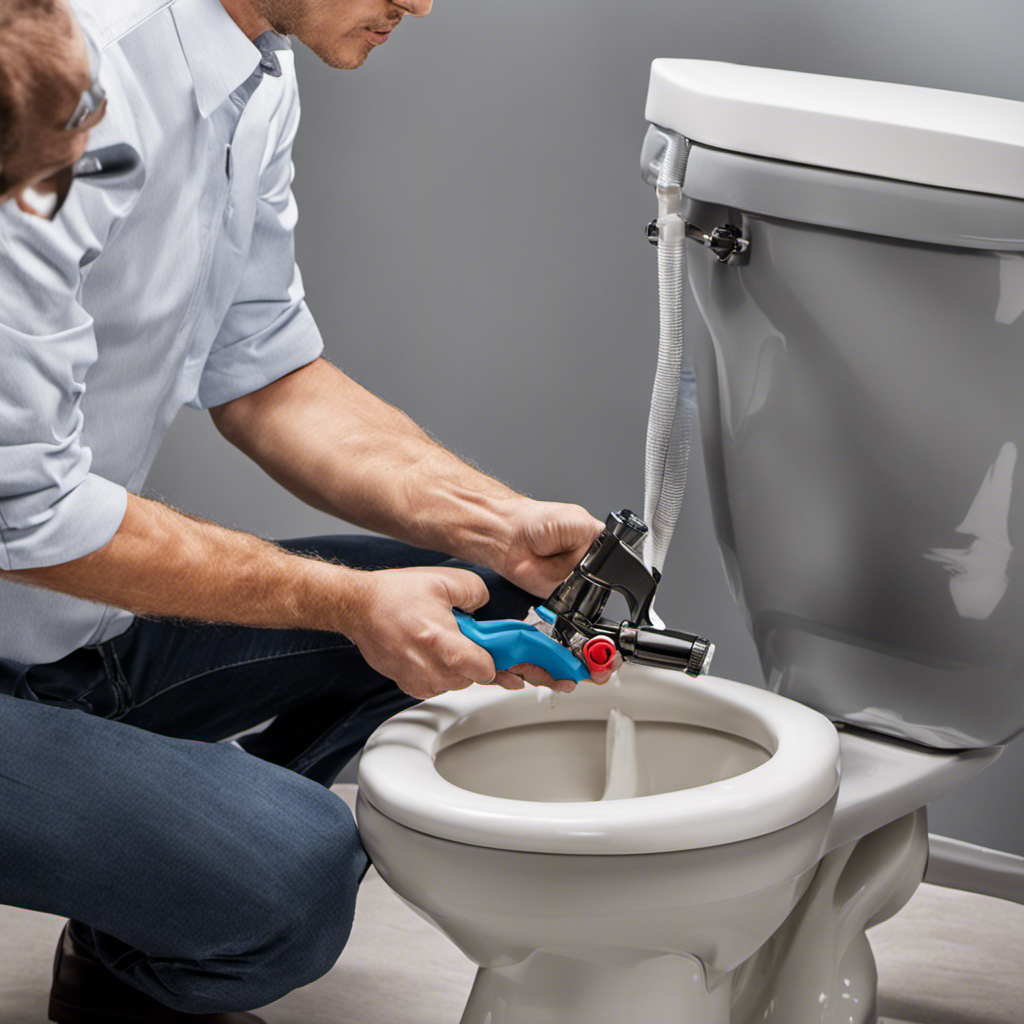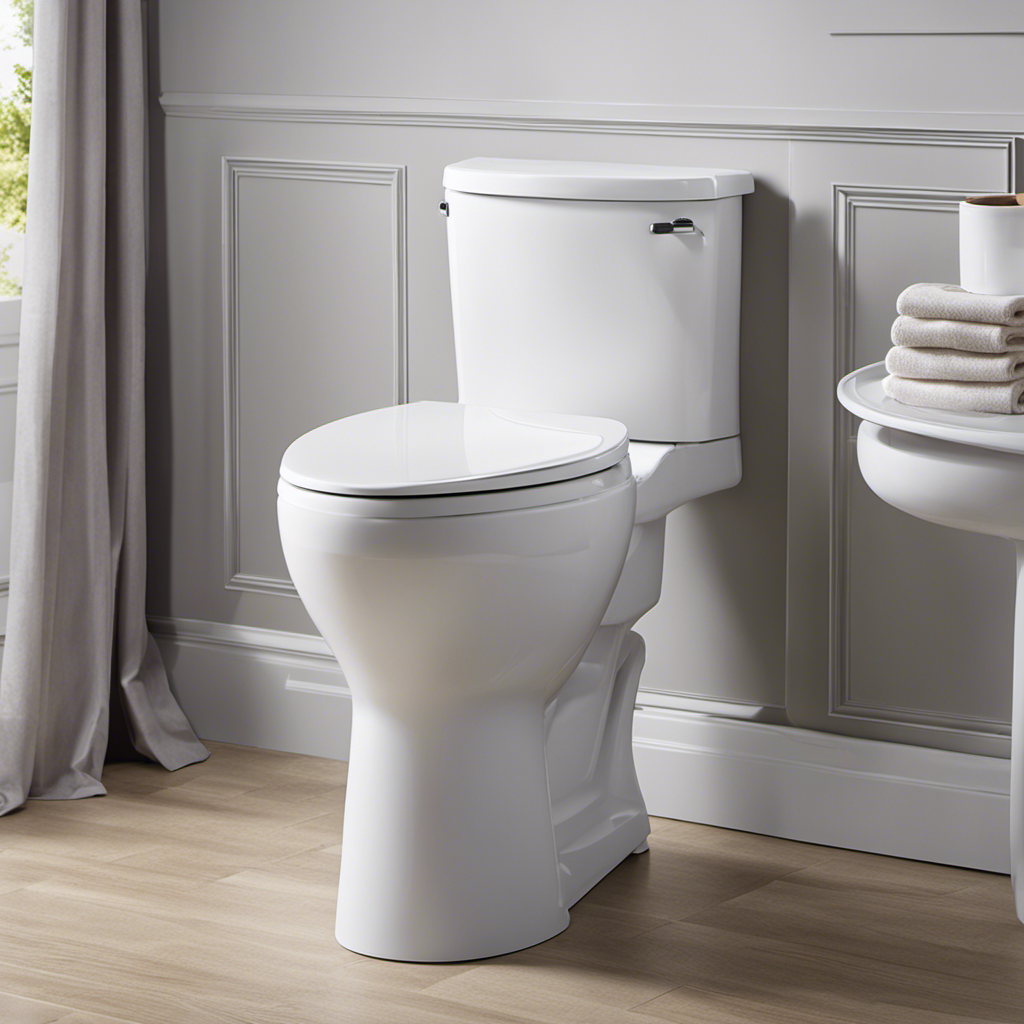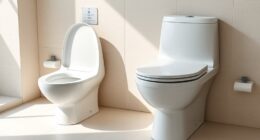Ever wondered how to give your bathroom a fresh update? Look no further!
In this article, I’ll guide you through the step-by-step process of changing your toilet seat. With a few simple tools and materials, you’ll be able to transform your bathroom in no time.
So, let’s dive in and get started on this DIY project that will leave your toilet looking brand new.
Key Takeaways
- Assess the condition of the current toilet seat and consider the different types available in the market.
- Take into account the dimensions of the toilet bowl and the style of the bathroom when selecting a replacement seat.
- Gather the necessary tools and materials, including a screwdriver, a trash bag for disposal, and possibly a wrench and measuring tape.
- Remove the old toilet seat by locating and removing the securing screws, and measure the dimensions of the toilet bowl before choosing a new seat.
Assessing the Current Toilet Seat
Take a look at your current toilet seat and see if there are any cracks or signs of wear. Assessing the condition of your toilet seat is the first step in choosing the right replacement.
There are various types of toilet seats available in the market, such as standard, elongated, soft close, and bidet seats. Standard seats are the most common and fit most toilets, while elongated seats are designed for elongated bowls. Soft close seats have a slow-closing mechanism that prevents slamming. Bidet seats offer additional features like cleansing with water.
Consider the dimensions of your toilet bowl and the style of your bathroom when selecting a replacement seat. It is important to choose a seat that is compatible with your toilet and suits your preferences for comfort and aesthetics.
Gathering the Necessary Tools and Materials
Before beginning, make sure you have all the tools and materials required. To successfully change a toilet seat, you will need the following:
-
A screwdriver: This tool is essential for removing the screws that secure the old seat to the toilet bowl. Make sure you choose the right type and size of screwdriver for the job.
-
New toilet seat: When choosing the right toilet seat, consider factors such as durability, comfort, and style. Measure the dimensions of your toilet bowl to ensure a proper fit.
-
Trash bag: Proper disposal of the old toilet seat is important. Use a sturdy trash bag to contain the old seat and any other components you remove during the process.
Removing the Old Toilet Seat
To remove the old toilet seat, first, you’ll need to locate the screws that secure it to the toilet bowl. These screws are usually located on the underside of the seat, near the back of the bowl. Once you’ve located the screws, you can use a screwdriver to loosen and remove them. Make sure to hold onto the seat as you remove the screws to prevent it from falling. Once the screws are removed, you can lift the old seat off the bowl.
Before choosing a new toilet seat, it’s important to measure the dimensions of your toilet bowl. This will ensure that the new seat will fit properly. Measure the length and width of the bowl, as well as the distance between the mounting holes. Use these measurements to find a new seat that matches the dimensions of your toilet bowl.
Additionally, consider the material, style, and features of the new seat to find one that suits your needs and preferences.
Installing the New Toilet Seat
Now that you have the new toilet seat, you can begin installing it by lining up the mounting holes with the holes on the toilet bowl. Make sure to follow these steps for proper positioning and a secure fit:
-
Check the fit: Before installation, ensure that the new toilet seat is compatible with your toilet bowl. Measure the distance between the mounting holes and compare it to the dimensions of the new seat.
-
Choose the right material: Consider the material of the toilet seat. Whether you prefer plastic, wood, or other options, make sure it is durable and easy to clean.
-
Align and tighten: Place the seat on top of the toilet bowl, aligning the mounting holes. Insert the bolts through the holes and secure them with the nuts provided. Use a screwdriver or wrench to tighten the nuts evenly.
Finishing Touches and Maintenance Tips
Once you’ve finished installing the new toilet seat, don’t forget to regularly clean it to maintain its appearance and hygiene. Cleaning techniques for toilet seats vary depending on the material.
For plastic seats, use a mild soap or detergent and warm water to wipe it down. Avoid using abrasive cleaners or scrub brushes that can damage the surface.
For wooden seats, use a wood cleaner or a mixture of vinegar and water to remove any stains or odors.
It’s important to choose the right toilet seat for your needs. Consider factors such as durability, comfort, and style. Additionally, opt for a seat that has a built-in antimicrobial coating to prevent the growth of bacteria.
Frequently Asked Questions
How Often Should I Replace My Toilet Seat?
To determine how often to replace your toilet seat, consider factors such as wear and tear, cracks, and stains. Signs that indicate it’s time to replace include loose hinges, discomfort, and difficulty cleaning.
Can I Use Any Type of Toilet Seat on My Toilet?
Yes, you can use different types of toilet seats on your toilet, but it’s important to consider compatibility. Some toilet seats may not fit or be compatible with certain toilets due to variations in size and shape. Additionally, different toilet seat materials offer varying levels of durability and comfort.
What Should I Do if the Toilet Seat Is Stuck and Won’t Come Off?
If the toilet seat is stuck and won’t come off, there are troubleshooting tips you can try. Apply lubricant to the bolts, use a wrench to loosen them, or consider alternative solutions like calling a professional plumber.
Are There Any Special Cleaning Instructions for a New Toilet Seat?
When it comes to cleaning a new toilet seat, it’s important to follow the manufacturer’s instructions. Using appropriate cleaning products and disinfecting methods will help keep it germ-free and in good condition.
Can I Install a Bidet Seat on My Existing Toilet Seat?
Yes, you can install a bidet seat on your existing toilet seat. It offers numerous benefits such as improved hygiene and comfort. To install, simply follow the manufacturer’s instructions and ensure a secure fit.
Conclusion
In conclusion, changing a toilet seat may seem like a daunting task, but it can be easily accomplished with the right tools and materials.
By assessing the current seat and gathering the necessary tools, you can ensure a smooth transition.
Removing the old seat and installing the new one requires precision and attention to detail.
Remember to add those finishing touches and follow maintenance tips to keep your new toilet seat in top condition.
So get ready to tackle this project and transform your bathroom with a brand new toilet seat.










